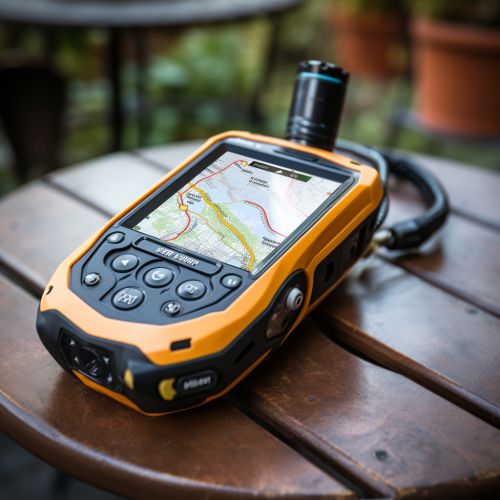Selective Availability
Introduction
Selective Availability (SA) is a feature of the GPS that was designed to limit the precision of civilian GPS receivers. It was implemented by the United States Department of Defense (DoD) to prevent potential adversaries from using the high-precision signals for military purposes. SA was in operation from 1990 until 2000, when it was turned off by order of President Bill Clinton.


History
The concept of Selective Availability was first proposed during the development of the GPS system in the 1970s. The U.S. military, which was the primary developer and user of GPS, was concerned about the potential misuse of the system by hostile forces. As a result, they implemented SA as a means of controlling access to the high-precision GPS signals[^1^].
In practice, SA was implemented by intentionally degrading the timing and positioning data transmitted by the GPS satellites. This was done by adding a certain amount of "noise" or error to the signals, which would make them less accurate for civilian users. The exact amount of error introduced by SA varied, but it could be as much as 100 meters in terms of positioning accuracy[^2^].


Impact on Civilian GPS Use
Despite the degradation of the GPS signals, civilian use of GPS grew rapidly during the 1990s. This was due in part to the development of Differential GPS (DGPS), a technique that allowed for the correction of the SA-induced errors. DGPS works by using a network of ground-based reference stations to measure the error in the GPS signals, and then transmitting this correction data to the GPS receivers[^3^].
However, the use of DGPS was not without its challenges. The reference stations were expensive to build and maintain, and the correction data had to be transmitted over a separate communication link, which added to the complexity and cost of the system. Furthermore, the accuracy of DGPS was still limited by the amount of error introduced by SA[^4^].


Discontinuation of Selective Availability
In the late 1990s, there was growing pressure to turn off SA. This was due in part to the increasing use of GPS for civilian applications, such as navigation and surveying, which required higher accuracy than was possible with SA in place. There were also concerns about the impact of SA on the development of commercial GPS technologies[^5^].
In May 2000, President Bill Clinton announced that SA would be discontinued. This decision was based on an assessment of the U.S. national security needs, the impact of SA on civilian GPS use, and the availability of other means of denying GPS services to potential adversaries[^6^].
Since the discontinuation of SA, the accuracy of civilian GPS receivers has improved significantly. Today, most receivers are capable of achieving positioning accuracy of less than 10 meters, and with the use of advanced techniques such as Real-Time Kinematic (RTK) GPS, accuracy can be improved to the centimeter level[^7^].


Future of Selective Availability
While SA has been turned off, the capability to reintroduce it remains built into the GPS system. However, the current policy of the U.S. government is to not degrade the GPS signals in this way. This policy is based on the recognition of the importance of GPS to the global economy and the reliance of many critical infrastructure systems on GPS[^8^].
In the future, the U.S. government has committed to implementing new technologies that will improve the performance and reliability of GPS. These technologies include new signals that are more resistant to interference and jamming, and the development of a new generation of GPS satellites that will provide improved accuracy and coverage[^9^].


See Also
References
[^1^]: Kaplan, E. D., & Hegarty, C. J. (2006). Understanding GPS: principles and applications. Artech house. [^2^]: Misra, P., & Enge, P. (2011). Global positioning system: signals, measurements, and performance. Ganga-Jamuna Press. [^3^]: Parkinson, B. W., & Spilker, J. J. (1996). Global positioning system: theory and applications, Volume 1. American Institute of Aeronautics and Astronautics. [^4^]: Leick, A., Rapoport, L., & Tatarnikov, D. (2015). GPS satellite surveying. John Wiley & Sons. [^5^]: Langley, R. B. (1999). GPS, the ionosphere, and the solar maximum. GPS world, 10(7), 44-49. [^6^]: Pace, S., Frost, G., Lachow, I., & Frelinger, D. R. (1995). The global positioning system. RAND Corporation. [^7^]: Hofmann-Wellenhof, B., Lichtenegger, H., & Wasle, E. (2008). GNSS—global navigation satellite systems: GPS, GLONASS, Galileo, and more. Springer Science & Business Media. [^8^]: US Department of Defense. (2008). Global Positioning System Standard Positioning Service Performance Standard. Washington, DC: US Government Printing Office. [^9^]: Betz, J. W., & Kolodziejski, L. R. (2009). Modernization of the Global Positioning System. Navigation, 56(2), 75-88.
